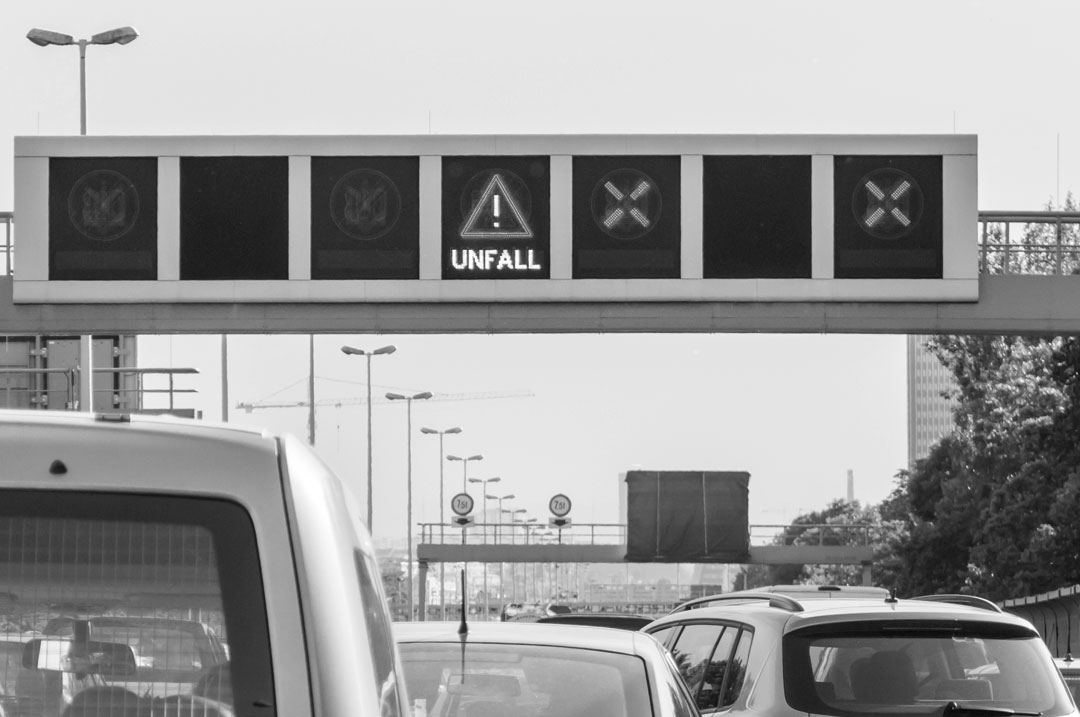OPTIMIZATION
If roads could think, traffic would flow

Our optimization methods are aimed at improving the quality of traffic flow, reducing environmental pollution, avoiding economic damage and lowering road construction costs.
Based on the current and predicted traffic situations, an improvement of the traffic flow can be achieved using appropriate traffic control methods. In addition to algorithms with local effect, rerouting strategies have especially proven to be effective, recommending alternative routes in the road network to motorists. Specialized methods are used to take safety in tunnels into account.
Effects on traffic flow are achieved using variable message and traffic signs, by adapting speed limits, indicating warnings or directives, presenting information, or giving rerouting advice.
All information can also be transmitted directly for in-vehicle use (C2X technology).
Our systems support the following methods for local traffic control:
- section control with automatic or manual speed harmonization, congestion or emergency warning
- ramp metering at highway access points to reduce negative impact on highly loaded main carriageways
- temporary use of hard shoulder adding an additional lane during peak hours
- traffic control in intersections with dynamic lane assignment depending on traffic demand in the intersection
The indication of rerouting advices is used to control traffic flow in networks. The traffic situation on main and alternative routes is the basis for rerouting decisions, which are calculated by a decision logic, taking short term predictions into account and leading to appropriate rerouting measures.
An additional effect can be achieved by disseminating information to the road users, who will then take their own decisions.
The specific situation in conurbations can be taken into account by interconnection with the urban traffic center. A traffic system management realizes a strategic management involving road operators both on regional and urban level.
Finally, the reduction of the negative impact of operational work, for example by optimized planning of roadwork or winter service, will have an indirect, positive influence on traffic flow.



